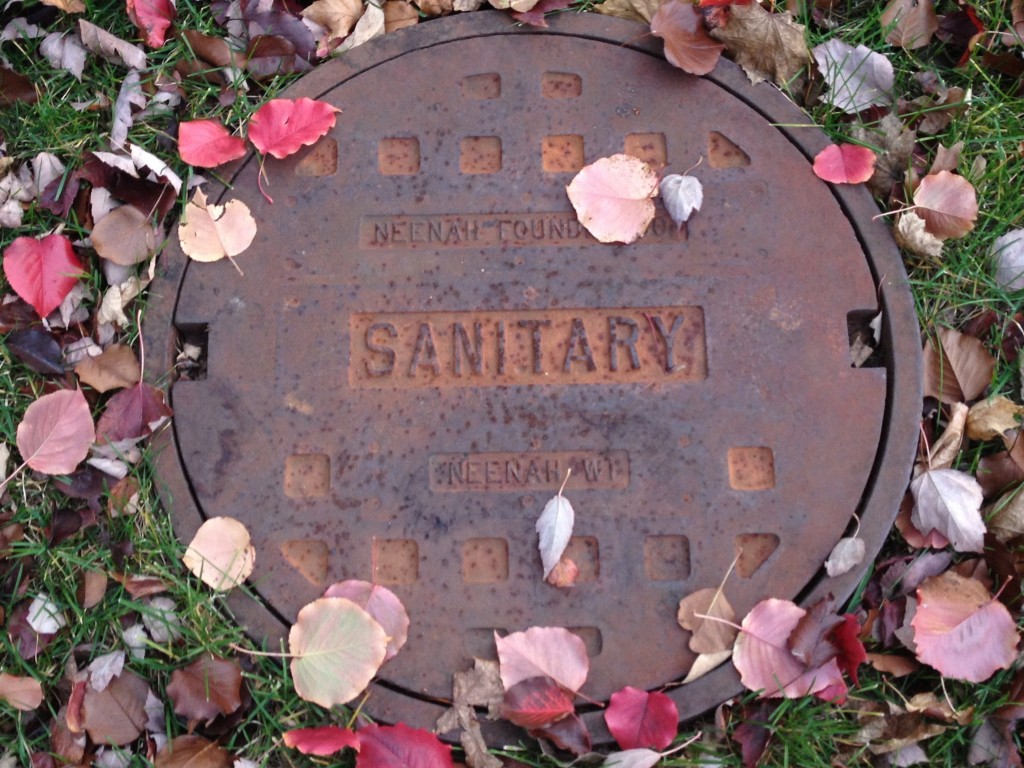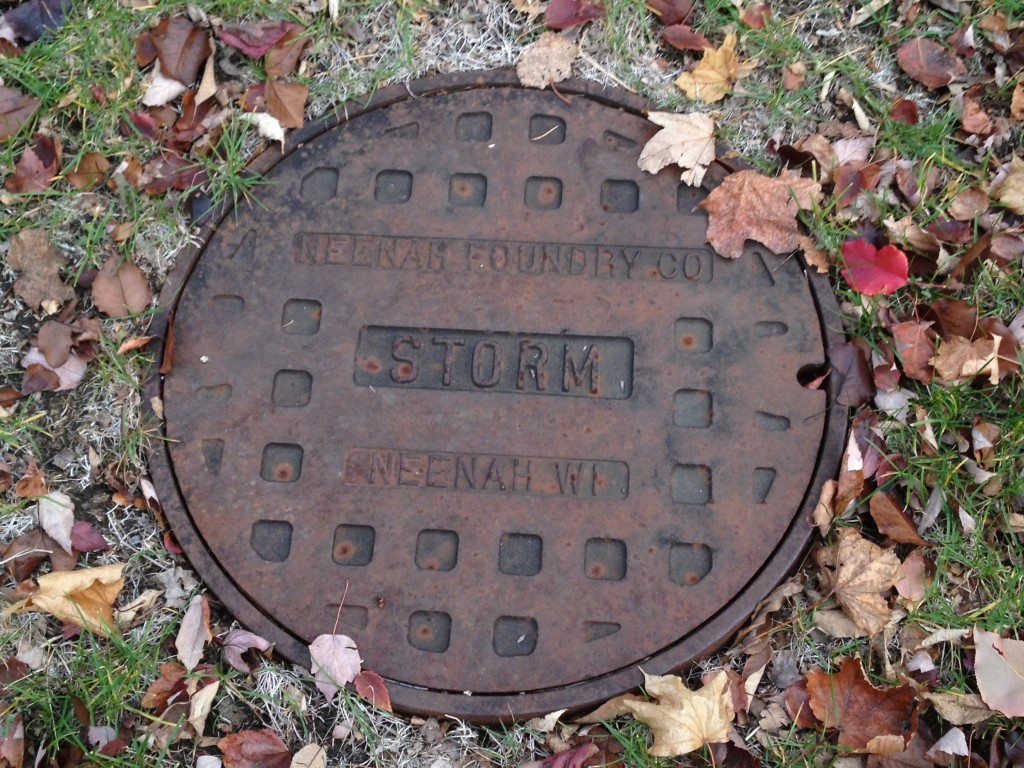Ever wondered where your manhole covers come from? Probably not, huh? Well, that’s why you have me, a blogger obsessed with civic minutiae.
All the manhole covers in our neighborhood say “Neenah, WI” and “Neenah Foundary.” I wanted to know who and where exactly that was. Here’s what I found out:
William Aylward, Sr. began Aylward Plow Works in 1872… and began by manufacturing cast-iron plow blades, stoves, bean pots, barn door rollers and sleigh shoes.
(Bean pots! Barn door rollers! Sleigh shoes?!?)
In 1922, the company was re-named to Neenah Foundry Co. In 1928, Neenah produced their first industrial products, and in 1946, the first automated molding machines were installed…
“Neenah” – strange name. Maybe the town was named after someone’s daughter?
Nope. …Governor Doty, who meeting with a band of Indians one day, pointed to the river and asked, “what is that?” The Indians answered, “Neenah,” being their word for water. Doty liked the word and applied it to the region. (Hmm, not sure if I believe this or not, but the translation checks out.)
Neenah makes manhole covers, tree grates, bridge scuppers, curb inlets, floor drains, trenches, wheel guards, and pipe grates! (I want to read that sentence over and over again.)
Neenah Foundry provides jobs to 900 plus employees… and pours more than 500 tons per day in municipal and industrial castings.
And they recycle: Neenah products contain at least 85% recycled material from auto bodies and scrap iron.
Cool, huh?





Oh my goodness, SUPER cool!!
Also, way to make photographs of manhole covers beautiful, Heidi.
Interesting. Here in Nicaragua, we wonder where manhole covers *go to,* since the amount of metal actually makes them worth some money…
Next time you are in Minneapolis you must check out the manhole covers downtown. Some years ago the city commissioned an art project, inviting designs for the covers, and apart from the cold, it may be the best explanation for why Minneapolitans stroll down the sidewalk looking at their feet.
And a word about why they are round. Almost any other shape can be turned to fit “through” itself and there goes your lid…ooops! They also roll easily this way; double winner.
Nice shots Heidi!
“Where Manhole Covers Come From” can also be answered with the East Jordan Iron Works company in East Jordan, Michigan. This company’s cast iron manhole covers, sewer grates, fire hydrants and much more can be seen in cities and suburbs across the country. Usually marked with “East Jordon” or “EJIW”.
Like Neenah, EJIW is well over 100 years old. They got their start making industrial castings for the lumber and railroad industries in northern Michigan, hence their location in the middle of the Lower Peninsula on beautiful Lake Charlevoix. The lake gave them water transport access to the Great Lakes, bringing in iron ore and then letting them ship their products out by water.
You can still hike abandoned rail lines in the Upper Peninsula and see “EJIW” cast into the side of the rails….or spot a manhole cover in Florida with the same!
Hi there! Do you use Twitter? I’d like to follow you if that would be ok.
I’m absolutely enjoying your blog and look forward to new posts.